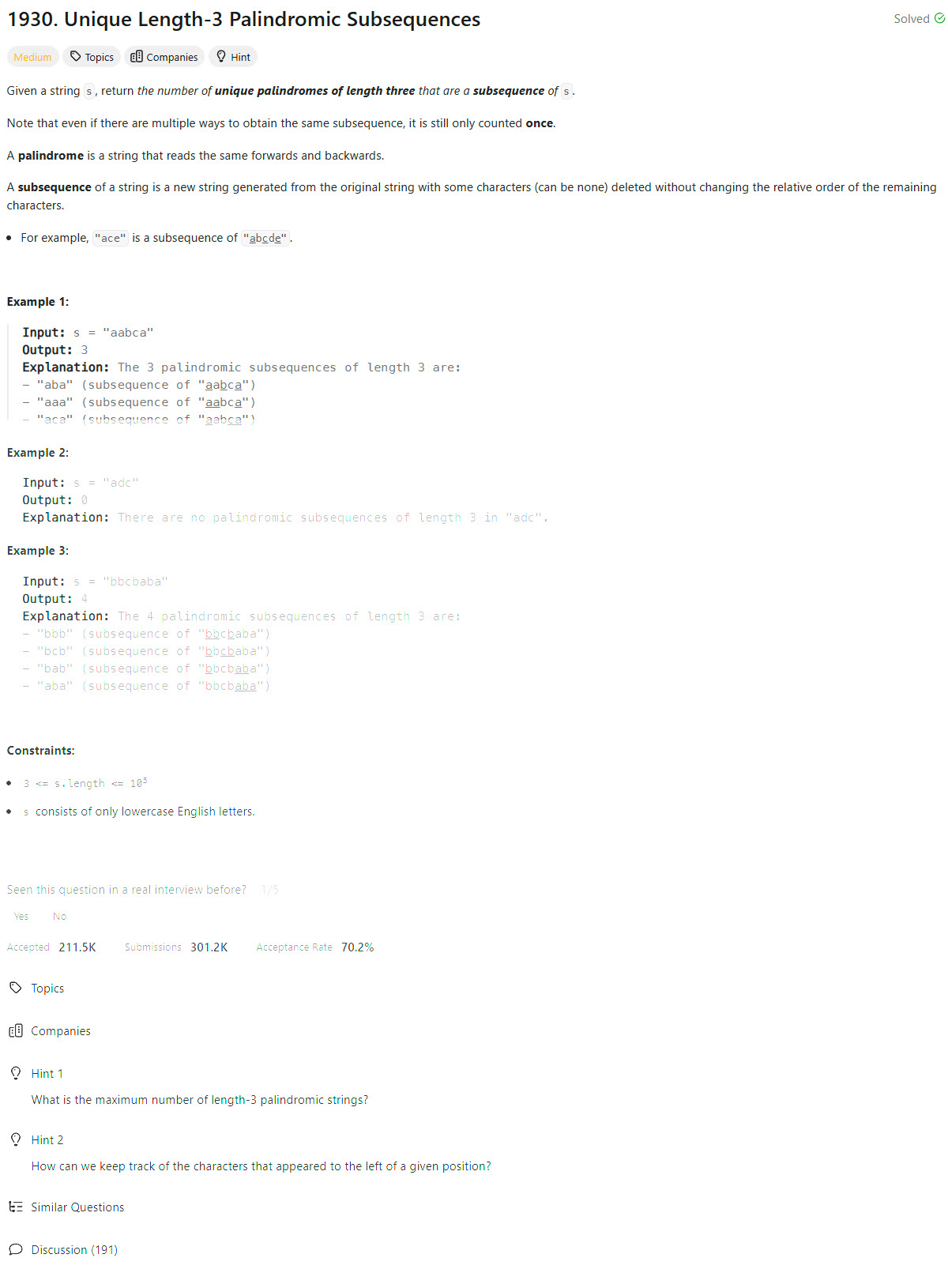Problem of The Day: Unique Length-3 Palindromic Subsequences
Problem Statement

Brute Force [TLE]
class Solution:
def countPalindromicSubsequence(self, s: str) -> int:
N = len(s)
seen = set()
def isPalindrome(curr):
l, r = 0, len(curr) - 1
while l < r:
if curr[l] != curr[r]:
return False
l += 1
r -= 1
return True
def dfs(i, curr):
if i == N:
if len(curr) == 3 and isPalindrome(curr):
seen.add(''.join(curr))
return
if len(curr) == 3:
if isPalindrome(curr):
seen.add(''.join(curr))
return
dfs(i + 1, curr + [s[i]])
dfs(i + 1, curr)
for i in range(N):
dfs(i, [])
return len(seen)
class Solution:
def countPalindromicSubsequence(self, s: str) -> int:
N = len(s)
pos = defaultdict(int)
res = set()
for i, c in enumerate(s):
if i >= 2 and c in pos:
for j in range(pos[c] + 1, i):
res.add(c + s[j] + c)
if c not in pos:
pos[c] = i
return len(res)
Improve Algorithm using first and last
class Solution:
def countPalindromicSubsequence(self, s: str) -> int:
# Track the first and last occurrence of each character
first = {}
last = {}
for i, c in enumerate(s):
if c not in first:
first[c] = i
last[c] = i
res = set()
# Iterate over all characters in the string
for c in first:
if last[c] - first[c] > 1: # Check if there's space for a middle character
# Add all unique middle characters
res.update({c + s[mid] + c for mid in range(first[c] + 1, last[c])})
return len(res)
Editorial
Approach 1: Count Letters In-Between
class Solution:
def countPalindromicSubsequence(self, s: str) -> int:
letters = set(s)
ans = 0
for letter in letters:
i, j = s.index(letter), s.rindex(letter)
between = set()
for k in range(i + 1, j):
between.add(s[k])
ans += len(between)
return ans
Python 1-liner:
class Solution:
def countPalindromicSubsequence(self, s: str) -> int:
return sum([len(set(s[s.index(letter)+1:s.rindex(letter)])) for letter in set(s)])
Approach 2: Pre-Compute First and Last Indices
class Solution:
def countPalindromicSubsequence(self, s: str) -> int:
first = [-1] * 26
last = [-1] * 26
for i in range(len(s)):
curr = ord(s[i]) - ord("a")
if first[curr] == -1:
first[curr] = i
last[curr] = i
ans = 0
for i in range(26):
if first[i] == -1:
continue
between = set()
for j in range(first[i] + 1, last[i]):
between.add(s[j])
ans += len(between)
return ans
- time: O(n)
- space: O(1)